Fantastic Zoom, Limited Distortion: Nikon Z 24-200mm F4-6.3 VR Review
The Nikon Z 24-200mm f4-6.3 VR captures images that don’t look like they were shot with a budget lens.
As a series that’s just a few years old, the Z mount doesn’t have the wealth of coverage and specialty optics as the F mount. But, the Nikon Z 24-200mm f4-6.3 VR covers a ton of focal lengths in a single lens. At $799, it offers a lot of focal lengths for a reasonable price. But, cramming lots of focal lengths in one lens can be disastrous for image quality — and that’s coupled with a narrower variable aperture.
But, the Nikon Z 24-200mm f4-6.3 VR actually delivered a few surprises. While it won’t hold a candle to pricier lenses like the Z 70-200mm f2.8, it doesn’t sabotage image quality in the name of versatility and budget. It’s a lens I can easily see beginners and hobbyists enjoying, as well as those using a crop sensor Z-body, where the lens will reach 300mm.
Too Long, Didn’t Read
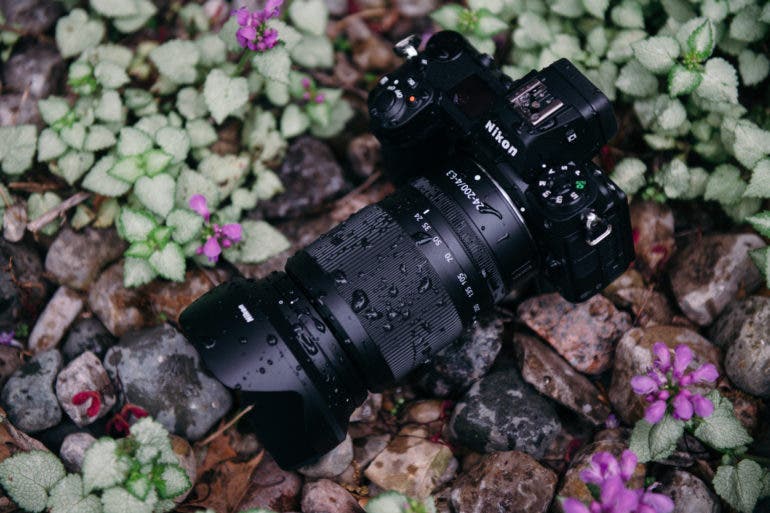
While the Nikon Z 24-200mm f4-6.3 VR doesn’t quite offer the same level of sharpness as the high-end S line, this versatile zoom manages image distortion well and offers plenty of versatility. As a result, it’s a good option for beginners and users of the Z 50.
Pros and Cons
Pros
- Versatile zoom range
- Lightweight
- Weather-sealed
- Minimal distortion
- Good color
- The fun flare that doesn’t wreak havoc on contrast
- Affordable
Cons
- Narrower variable aperture
- Minimal controls
- Not as sharp as some other Z lenses
Gear Used
I used the Nikon Z 24-200mm f4-6.3 VR with the Z7 II (firmware 1.20). The pet portraits below were also shot with the Flashpoint XPLOR 100 light, diffused with an umbrella. Gear was stashed in the updated Wandrd PRVKE II backpack.
Innovations
The Nikon Z 24-200mm f4-6.3 VR brings several Nikon technologies into a versatile lens that covers the gamut from wide-angle to telephoto. While the lens has tech like a stepping motor, ARNEO coating, and VR, the most innovative aspect of this lens is the zoom range. 70-200mm is the more common lens, though Sony and Canon have a 24-240mm, and Tamron has an 18-200mm.

Tech Specs
According to Nikon, the Z-mount 24-20mm has these specifications:
- Mount Type: Nikon Z Mount
- Focal Length Range: 24 – 200mm
- Zoom Ratio: 8.3x
- Maximum Aperture: f4-6.3
- Minimum Aperture: f/22-36
- Format: FX
- Maximum Angle of View (DX-format): 61˚
- Minimum Angle of View (DX-format): 8°
- Maximum Angle of View (FX-format): 84˚
- Minimum Angle of View (FX-format): 12°20′
- Maximum Reproduction Ratio: 0.28x
- Lens Elements: 19
- Lens Groups: 15
- VR (Vibration Reduction) Image Stabilization: Yes Lens shift using voice coil motors (VCMs)
Diaphragm Blades: 7 Rounded diaphragm opening
ARNEO Coat: Yes - ED Glass Elements: 2
- Aspherical Elements: 2
- Aspherical Extra-low Dispersion Glass Elements: 1
- Fluorine Coat: Yes
- Super Integrated Coating: Yes
- Autofocus: Yes
- AF Actuator: STM (stepping motor)
- Internal Focusing: Yes
- Minimum Focus Distance:
- 1.64 ft. (0.5m) at 24mm zoom position
- 1.78 ft. (0.54m) at 35mm zoom position
- 1.81 ft. (0.55m) at 50mm zoom position
- 1.91 ft. (0.58m) at 70mm zoom position
- 2.14 ft. (0.65m) at 105mm zoom position
- 2.24 ft. (0.68m) at 135mm zoom position
- 2.30 ft. (0.7m) at 200mm zoom position
- Focus Mode: Autofocus, Manual
- Filter Size: 67mm
- Approx. Dimensions (Diameter x Length): 3.1 in. (76.5 mm) x 4.5 in. (114 mm) Distance from camera lens mount flange, Based on CIPA guidelines
Approx. Weight: 20.2 oz. (570 g) Based on CIPA guidelines
Ergonomics

I’ve shot with most of the Z series lenses, and the 24-200mm atheistic fits right in with the rest of the series. The lens weighs 20.2 ounces, which is light for such a wide zoom range. That makes the Z7 II just slightly front-heavy, but it was a comfortable combo to hike with.
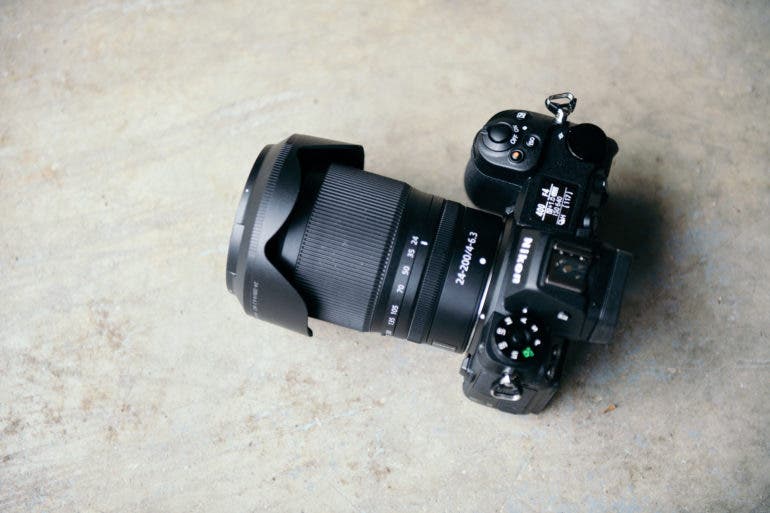
Nikon Z lenses typically fall into one of two categories: advanced lenses with lots of controls and LED info panels, or basic lenses with barely any controls. The Z 24-200mm f4-6.3 VR falls into the latter category. There are just two controls and a lock switch on the lens. The first control is the custom control ring – a thin textured ring with a smooth turn. It can be used for manual focus or set to control other settings like aperture or exposure compensation. The zoom ring is much larger, which makes it easy to blindly differentiate between the two. A small lock switch sits between the two rings, which is used only for keeping the lens from expanding while stored.

I missed the A/MF switch common on most Nikon lenses. If you want to switch to manual focus, you need to do so on the quick menu of the camera itself. The minimalist design also leaves out the focal distance scale, which on Z lenses is typically through the LED panel, though that’s not surprising at this price point.
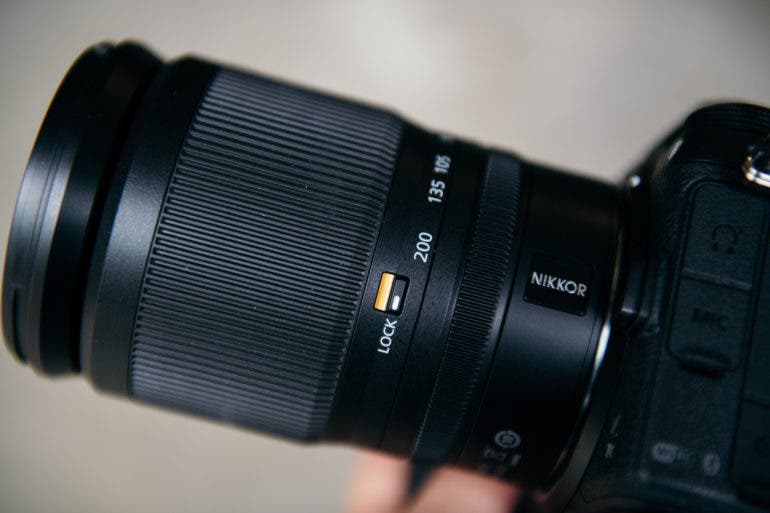
The front of the lens accepts 67mm filters. It ships with a small, twist-on filter.
Build Quality
While the Nikon 24-200mm f4-6.3 VR Z is more budget than pro, it still includes dust and moisture sealing. I gave it a good splash, and the lens was unfazed.
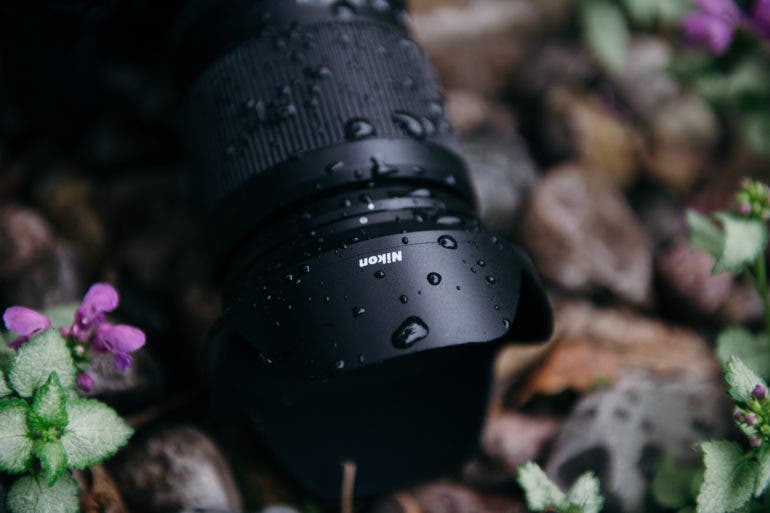
The 24-200mm uses a plastic barrel. While it doesn’t feel cheap, the pro-level Z series lenses tend to feel more robust.
Autofocus

I used the Nikon Z 24-200mm f4-6.3 VR for sports, wildlife photography, and pet portraits. The lens did surprisingly well at a soccer game, with only a handful of misses out of more than 100 shots. Performance was similar to using other Z mount lenses on the Z7 II body.
The lens struggled the most with closer subjects. It can focus on objects from 1.64 to 2.3 feet from the front of the lens. Some would be perfectly sharp in bursts close to the end of that range, while others would be wildly out of focus.
Ease of Use
With minimal controls, the Nikon Z 24-200mm f4-6.3 VR is straightforward to use. I can easily see this lens being a favorite among Z 50 users, where it will shoot like a 300mm lens and other beginner lenses. There’s just the control ring, zoom ring, and a lens lock. Beginners just mount and go. The only thing really to learn is how to customize the first control ring.
Image Quality
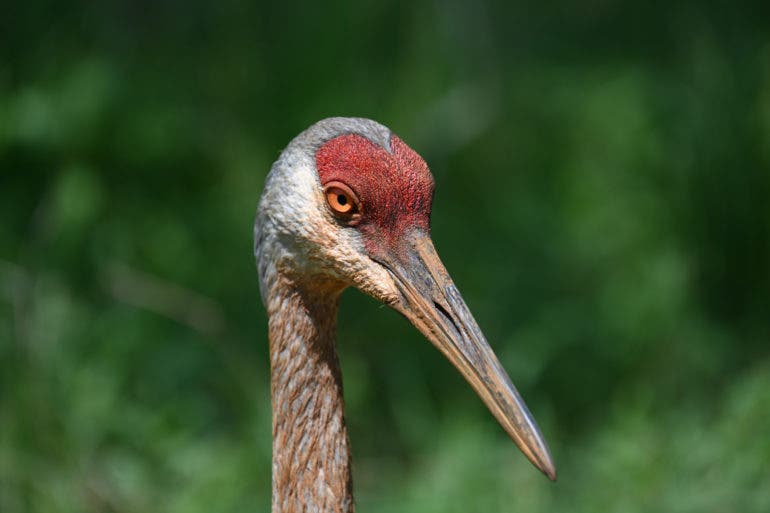
The Nikon Z 24-200mm f4-6.3 VR is one of the Z series more budget-friendly zooms, yet I wasn’t disappointed with the image quality. Of course, you can get more bokeh with the 70-200mm f2.8, but that long end will still produce some nice soft backgrounds. Distortion is well controlled, and color is solid.
Bokeh

As an f4-6.3, the aperture isn’t crazy wide. As a result, most of the bokeh is created from the telephoto end or getting in close to the subject. Still, when you get those bokeh balls, they are soft and without onion ringing. Most appear circular, though sometimes a few spots would have a slight octagon look to them. At 200mm, backgrounds can be nicely blurred, giving the subject some good pop.
Sharpness

The center of the image is sharp at both 24mm and 200mm wide open (f4 and f6.3, respectively). The corners are a little bit softer – not horribly so, but not that corner-to-corner sharpness that the high-end Z lenses create. The corners sharpen up at about f5.6 at the wide-angle and f8 at the telephoto end.
Stabilization is also a plus for getting sharp images, particularly at the long end of the zoom or in low light.
Lens Character

The more focal lengths crammed into a single lens, the harder it is to prevent distortion. That’s why I was surprised that the 24-200mm lens didn’t have much barrel or pincushion distortion. It was difficult to spot any bending of straight lines on the RAW files.
I was able to create some nice sunray-streaked flare shooting into the sun with no hood. In addition, the lens produced some ghosting circles shooting into the sun with and without the hood. The flare added a bit of character, but it wasn’t too disastrous on the contrast of the remainder of the image.
There’s a very slight amount of vignetting that is easily corrected in post. I also didn’t find obvious or distracting chromatic aberration.
Color Rendering

I’m partial to Nikon’s colors (probably because my current camera is the D850), and this lens still rendered those colors beautifully. Colors felt real, with just enough vibrancy to be eye-catching.
Extra Image Samples
From day one, The Phoblographer has been huge on transparency. Nothing from this review is sponsored. Lots of folks will post reviews and show lots of editing in the photos. The problem then becomes that anyone and everyone can do the same thing. It’s not showing what the lens can do. So we have a section in our Extra Image Samples area to show edited and unedited photos. From this, you can make a decision for yourself.
Edited
















Unedited


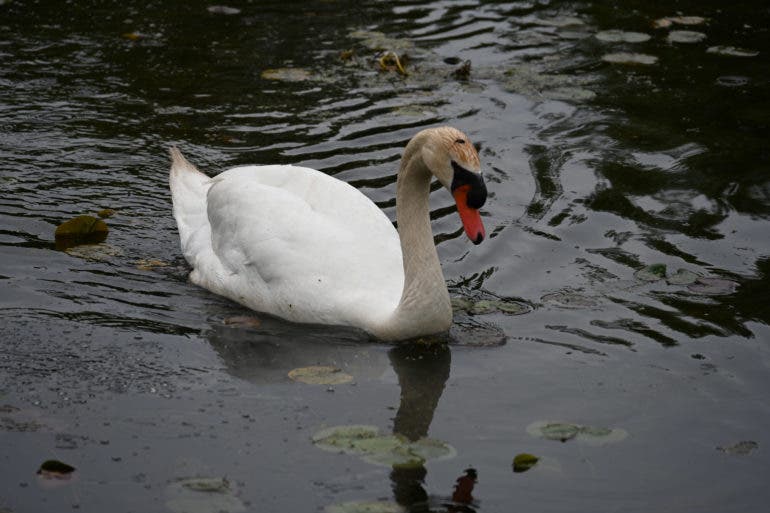









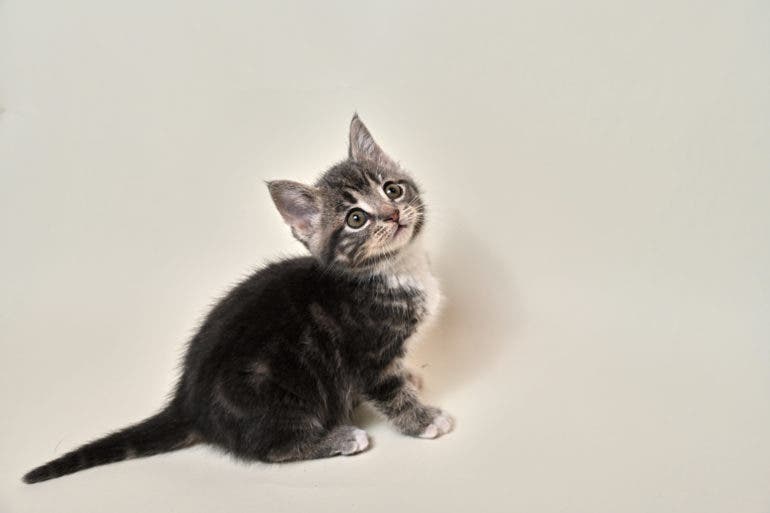




Conclusions
Likes
- This is a very versatile lens.
- It’s lightweight, considering the 200mm zoom.
- Distortion is well controlled.
- It creates a good mix of character with a bit of flare.
- Color is great.
- The $799 price is excellent.
Dislikes
- The aperture is not as bright as high-end lenses.
- There’s really just a control ring and nothing else.
- S-Line Z lenses are sharper at the corners.

The Nikon Z 24-200mm f4-6.3 VR covers what would typically take three lenses at a minimum, and yet it only costs $799. I can easily see this lens being a favorite among beginners, hobbyists, and travelers since you can capture a lot with just this lens. Distortion is hard to find, color is great, and you can bring in a little character with some subtle flare. I preferred this compared to images from Canon’s RF 24-240, which suffered from quite a bit of aberration and distortion.
Would I buy this lens? Well, no, probably not. The 70-200mm and 24-70mm f2.8 lenses would fit my wedding and portrait work better if I shot with the Z system. The 24-200mm is not a pro lens: those lenses are brighter and sharper to the corners, with a bit more detail and more controls on the lens itself.

While I wouldn’t recommend the lens to pro users, the Nikon Z 24-200mm f4-6.3 VR does well at what it’s attempting to do — put a lot of focal lengths in a compact lens made for beginners and hobbyists. So I would recommend it for hobbyists and beginners who want both wide-angle and telephoto in a single lens. For that reason, I’m giving the lens four out of five stars.